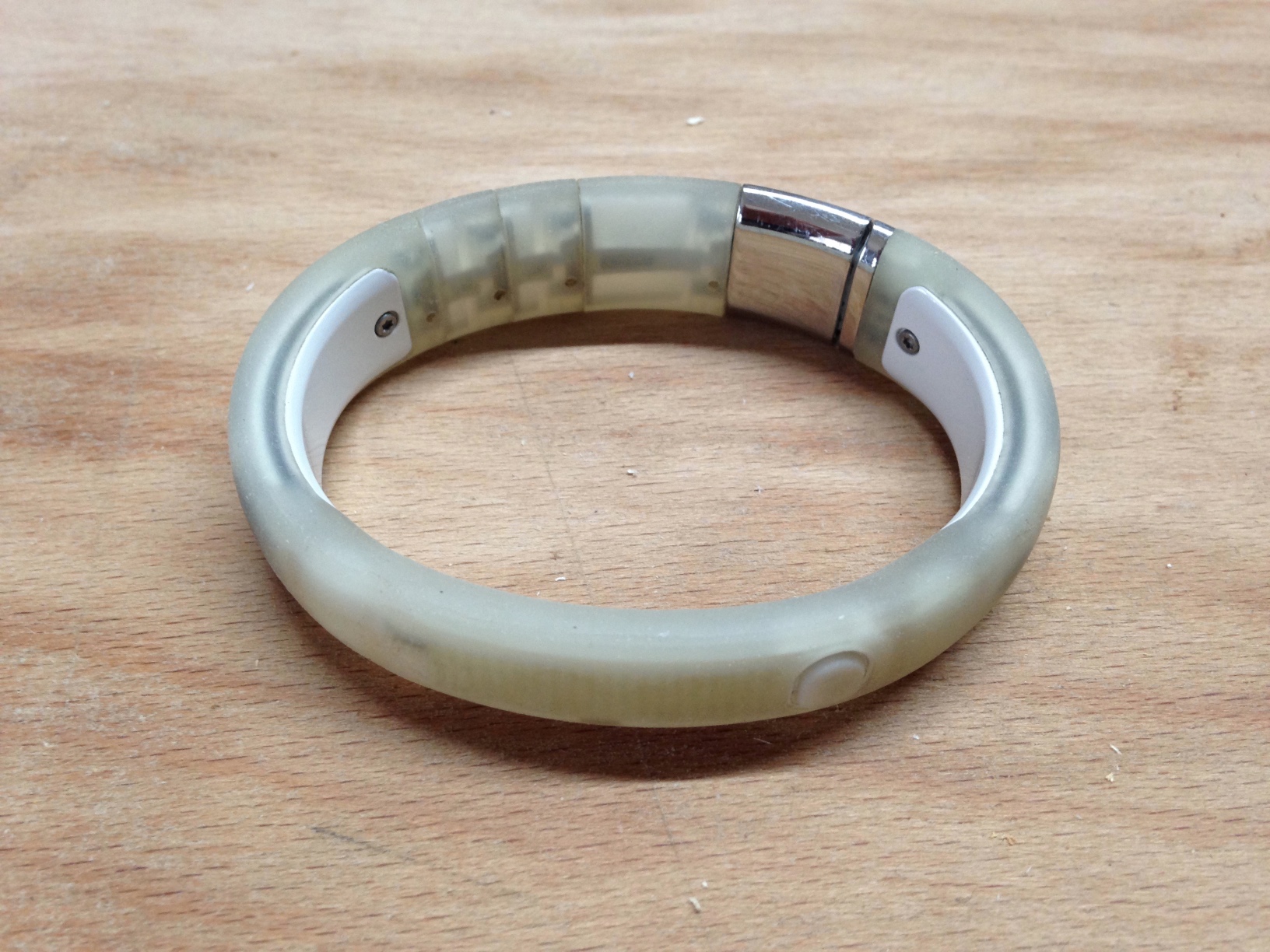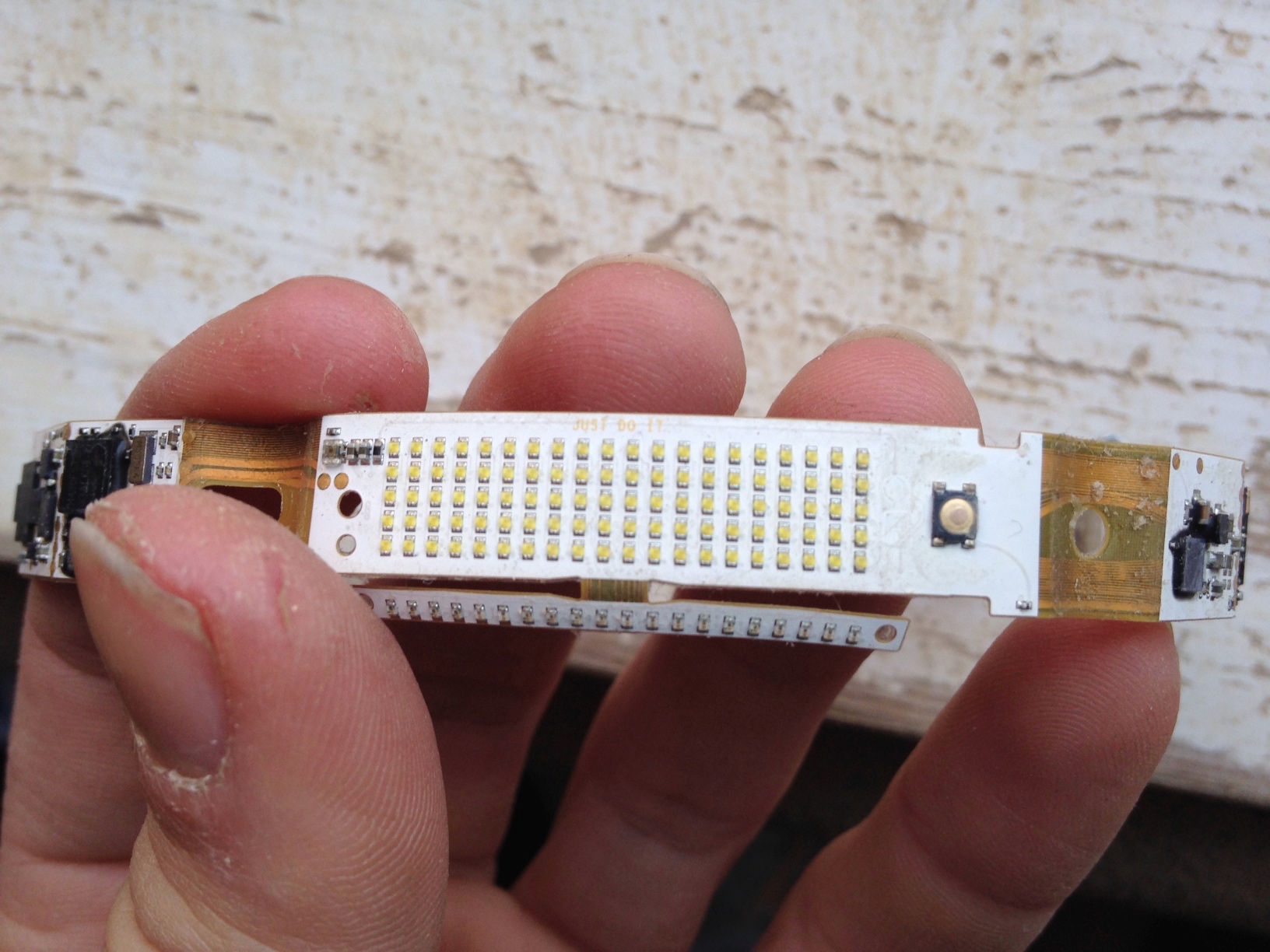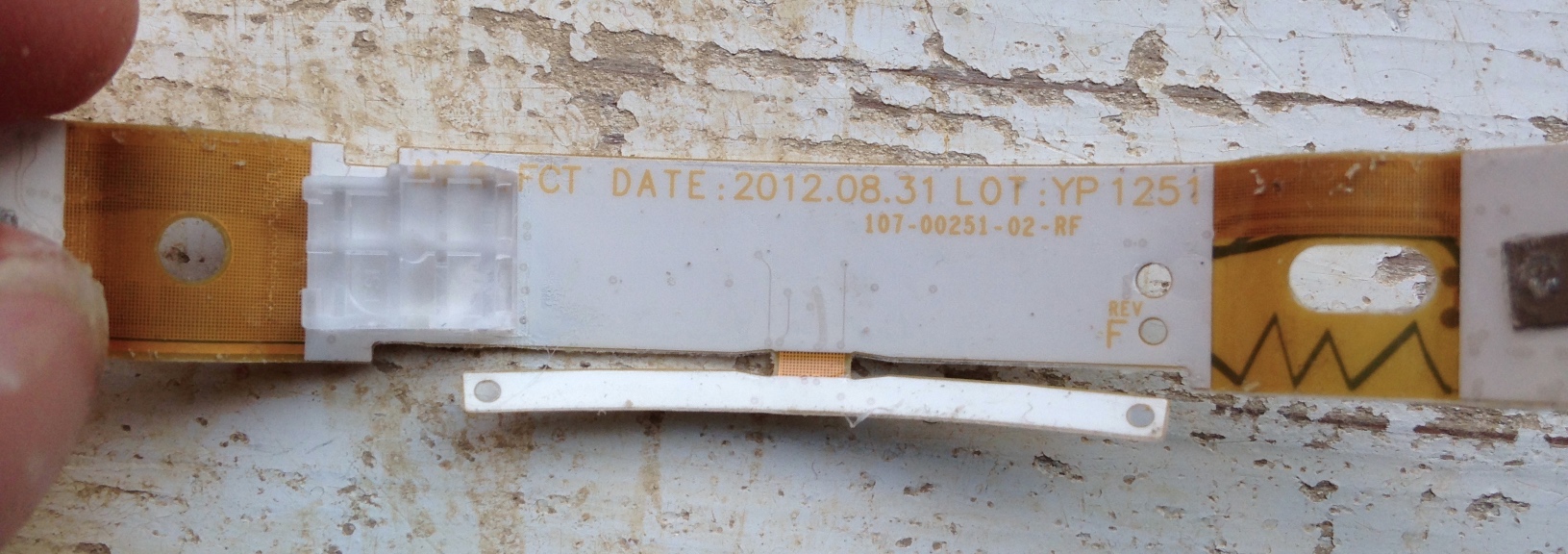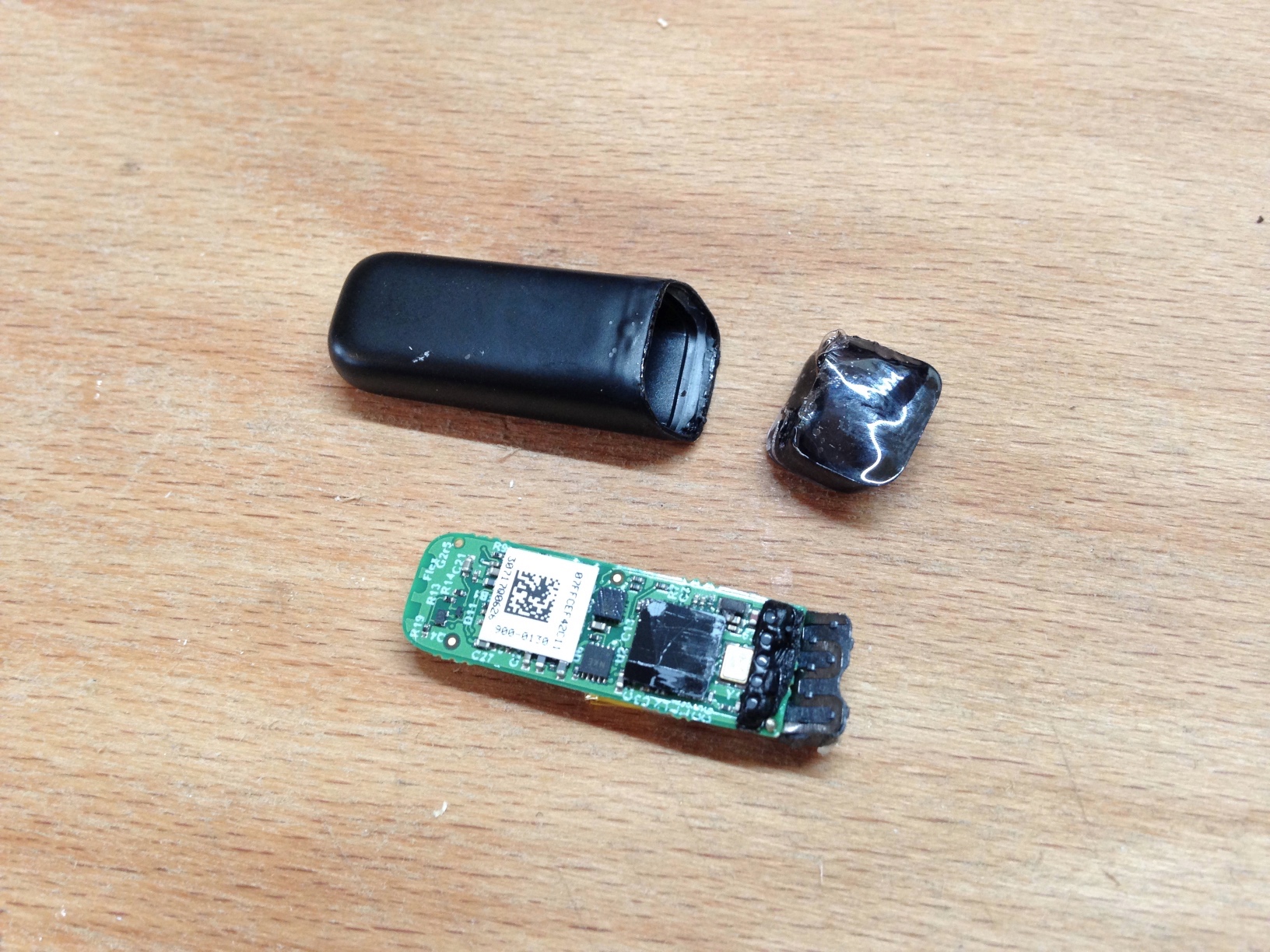The old Fitbit and Fuelband which Aaron Parecki gave me a few years ago (thanks Aaron!) don’t hold a charge anymore. The Fitbit battery is near impossible to replace, and with the Fuelband I decided that as there’s no way of loading custom firmware (which would let me get at data without an internet connection and proprietary apps), it wasn’t worth trying to get replacement batteries. So before throwing the devices away, I took them apart.
I didn’t find out much which I hadn’t already seen in teardowns, but these devices have such strange form factors that it was fascinating to see the engineering up close.


The rubber coating comes off very cleanly. Here you can see some of the funny curved traces used on flexible circuit boards:
![]()
The LED array, with “Just Do It” written on the top of the PCB (invisible to the end user). On the sections of flex between the more solid boards you can see the unbelievably fine traces:

On the back of the LED matrix section, with a part number. To the right you can see the jaggedy bluetooth antenna trace:

The fitbit isn’t so interesting. Removing the cap with a heatgun reveals a tiny circuit board with a tiny battery and vibrating element.

I also opened up the dock, as I noticed that the USB cable was power only, with no possibility of wired data transfer. The third pogo pin must be for the reset switch, which is mounted in the dock. There’s a little IC in there too, but I was more interested in seeing how the pogo pins were attached to the board. Turns out they’re just soldered straight on:

I’d love to have been able to flash custom firmware to the Fuelband, it’s a lovely bit of hardware, and manufacturing something like that is completely out of the question for a hobbyist. There are so many fun things which could be done with a device equipped with an LED matrix, accelerometers and bluetooth — a wearable MIDI controller, for example.
That possibility would also have made replacing the batteries worth doing, and in doing so saved the device from the landfill. Free software and open hardware isn’t just political, it’s better for the environment.